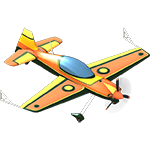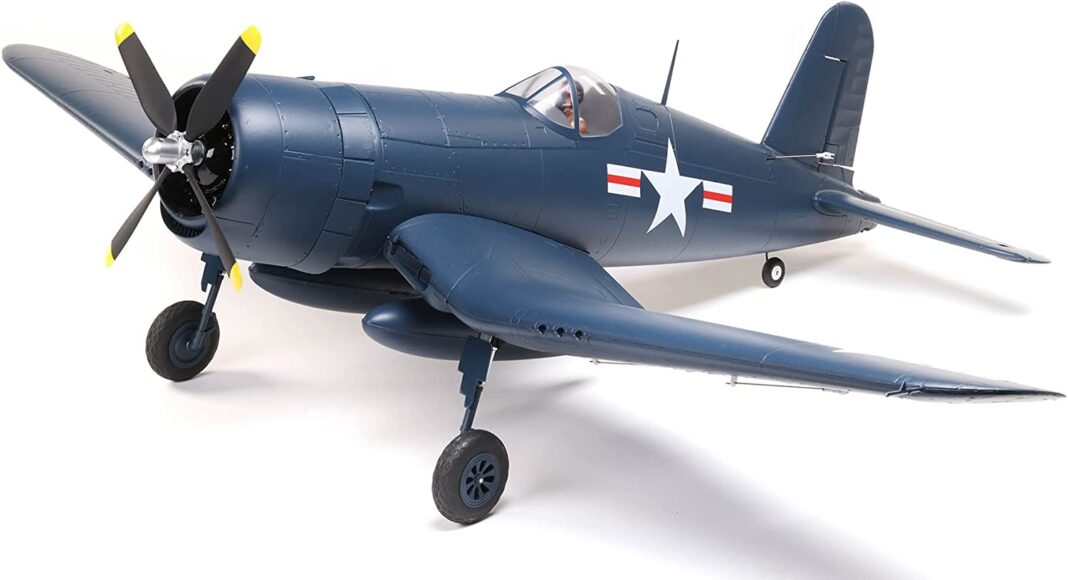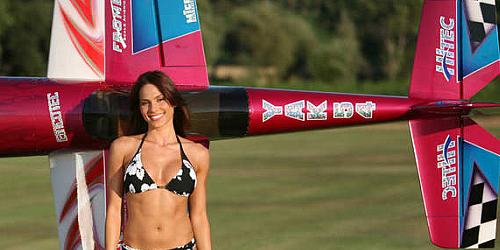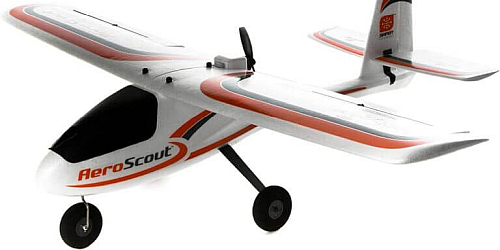The F4U was one of the most iconic fighters of the Pacific War. Although it had a difficult start – was rejected initially by the US Navy – it eventually proved its performance and robustness, being gradually improved to become a true shipboard plane. In the end, few fighters of that time could claim such a successful career.
Corsair has a unique design, distinct shape, and silhouette, so it is not surprising that this legendary warbird has always been a favorite model for many RC aircraft manufacturers. Our guide lists some suggestions to help you save some time with the research and get the Corsair suited to your skill level and preferences. We will constantly update this guide with new products, as they are available on the market, so don’t forget to come back here from time to time.
Why you will love this RC airplane
- A new and enhanced F4U Corsair RC airplane version with greater scale-like, sport flying, faster speed, and greater energy aerobatic capacities.
- The airplane is equipped with a Spektrum AR631 receiver that includes fly-by range telemetry and the industry-leading DSMX technology.
- This plane is ideal for beginner-intermediate pilots thanks to the special SAFE Select flying envelope protection.
Specifications
- Type: Bind-N-Fly Basic
- Engine: electric
- Material: Plastic
- RC plane dimensions: 51.5 x 15.5 x 11 inches inches
- Weight: 10.08 pounds
- Radio Control: Spektrum AR631 receiver with fly-by range telemetry and DSMX technology
- Recommended age: 14 years and up
- Brand: E-flite
Pros
- It is more powerful and has more capabilities that make it easier to fly than ever before.
- Rich in scale details with fine panel lines and realistic pilot replica.
- Has retractable landing gear and operational flaps.
Cons
- It is not the best option as your first RC plane ever. If you are a total beginner, some previous flying experience can help you save some money.
Why you will love this RC airplane
- The aircraft performs quite well, despite its small size.
- It flies steadily, reacts promptly, and can do aerobatics even in environments with some wind due to the integrated Xpilot gyro stabilizer system and the high-grade robust motor system.
- It is an excellent choice for new RC pilots thanks to the beginner mode that makes flying seem effortless.
Specifications
- Type: Ready-To-Fly
- Engine: electric
- Material: Foam
- RC plane dimensions: 13 x 13 x 5 inches
- Weight: 1.34 pounds
- Radio Control: 2.4Ghz with 4channels and 3-level flight control assistance (beginner/intermediate/expert)
- Batteries: 2 Lithium Metal batteries (included)
- Recommended age: 14 years and up
- Brand: VolantexRC
Pros
- Excellent performance for a small RC plane.
- The Xpilot gyro stabilizer technology helps the plane fly stably and react promptly to commands.
- Can perform aerobatics even in minor windy conditions.
- The durable but light EPP material makes it a great choice for beginners.
Cons
- Flight can be challenging if the wind is too strong.
- Ground take-offs can be problematic. Hand launch seems to be the best way to put this plane in the air.
- Electronics can be buggy at times.
Why you will love this RC airplane
- Suitable for both adults and kids.
- Built after the eye-catching F4U Corsair fighter with its distinctive wing shape.
- The complete rudder, elevator, and aileron controls enable the aircraft to fly like a real plane. With a 6-axes built-in gyro, this plane is very easy to fly, even for someone with little piloting experience.
Specifications
- Type: electric Ready-To-Fly
- RC plane dimensions: 15.27 x 13.35 x 6.06 inches
- Weight: 1.43 pounds
- Radio Control: 2.4Ghz with 4channels and 3-level flight control assistance (beginner/intermediate/expert)
- Batteries: 1 Lithium Polymer battery (included)
- Recommended age: 14 years and up
- Brand: TopRace
Pros
- Great throw-and-fly plane with useful technology for the money.
- It is very stable in the air, maneuverable, and can fly in small spaces.
- The body and propeller are very durable and can take lots of crashes.
Cons
- Not the best option as your first plane if you are a complete beginner. Some prior RC simulator experience can be helpful.
- Its very light weight factor makes this plane not suitable to fly in heavy winds.
- Taking off from the ground can be challenging as the wheels don’t spin smoothly enough in some cases.
Chance Vought F4U Corsair History
The design of the Corsair began in early 1938 following a US Navy specification intended to replace the F4F Wildcat. The XF4U-1 prototype made its first flight in May 1940 and entered service in 1942 after numerous modifications. Finally, the first order of 584 aircraft was placed on June 30, 1941, and the first production aircraft was released a year later. The Corsair had its baptism of fire on February 13, 1943, at Guadalcanal.
The Corsair’s wings formed a distinctive flattened W; the plane also had a streamlined circular fuselage and a large propeller. The cockpit was positioned significantly backward, and the lack of visibility was a severe problem. It was fast but also had some piloting difficulties. This “inverted gull wing” allowed the landing gear to be closer to the ground without being excessively long, thus making it more resistant to landings, despite the large propeller diameter. Last but not least, the W-wing allowed a 90° junction to the fuselage, increasing the visibility from the cockpit.
The early Corsair versions tended to bounce from one side to the other of the runway during landing; this was caused by the stiffness of its landing gear. For this reason, it was removed from the US Navy and became the first shipborne fighter to be assigned to ground bases. It equipped all US Marine Corps units in the second half of 1943. It was not used again by the Navy until 1944 when it was required to use a particular landing approach during turns.
The largest Corsair deployment occurred during the Battle of Okinawa between April 7th and 30th, 1944, when 305 Navy aircraft and 192 land-based Marines executed more than 600 support missions and scored 124 victories… It was on that occasion that the Corsair received its most prestigious nickname: “Sweetheart of Okinawa.” The F4U was, with 2,140 air victories, the second most successful aircraft in the Pacific.
This aircraft was only used in the Pacific during World War II, and the famous VMF-214 squadron and Colonel Gregory M. “Grandpa” Boyington were equipped with it. The Corsair was nicknamed the “Whistling Death” by the Japanese because of the whistling sound caused by the air inlets of the leading edges. This aircraft was the first one to successfully intercept an enemy aircraft using its own radar system. This plane was still used at the beginning of the Korean War, just like the P-51 Mustang. In France, it served in Indochina and Algeria within the Aéronavale.
Between 1940 and 1952, 12,574 of them were built, all versions included. Built jointly by Chance-Vought (about 7,800 of the F4U-1, F4U-4, F4U-5, and AU-1 series), Goodyear (4,000 FG-1A and FG-1D), and Brewster (735 F3A), it was used in combat by the British Fleet Air Arm (2,000) and the Royal New Zealand Air Force (425) during the war. After the war, it was acquired by France and later by various South and Central American countries such as Argentina, Honduras, and El Salvador, which bought old FG-1D, F4U-4, and F4U-5 models.





